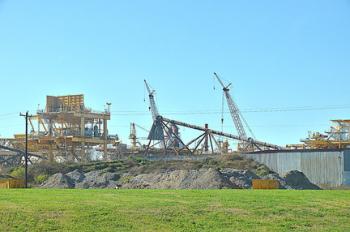
Marine Shale cleanup completed in Amelia
AMELIA, La. -- Cleanup at the former Marine Shale Processors Site in Amelia wrapped up Tuesday, and soil and groundwater testing to check for contaminants is expected to begin in a few months, Vicki Hadwin of the Louisiana Department of Environmental Quality’s Remediation Services Division, said.
A warehouse, lunchroom and some storage sheds will be the only buildings left on site, Hadwin said. All waste and processing equipment has been removed from the site, Hadwin said last week.
The next stage will be the soil and groundwater investigation, and Hadwin is working with consultants who have submitted a work plan, she said. Hadwin hopes to get the soil and groundwater investigation of the site started within the next few months, she said.
In 1985, Marine Shale Processors began incinerating hazardous wastes, including a wide variety of organic and inorganic hazardous substances reducing them to ash, according to the cooperative agreement between the DEQ and Marine Shale Processors.
Marine Shale Processors ceased operating the site in 1996 but left behind storage tanks and bins containing incinerated waste residues and untreated wastes, onsite stockpiles of incinerated wastes and untreated waste, and fill material composed of incinerated waste material, according to the agreement.
The State of Louisiana and U.S. Department of Justice took civil action against Marine Shale Processors to recover response costs following the finding of incinerated waste materials and untreated wastes at the abandoned site near Amelia.
The Department of Environmental Quality announced at the end of January that cleanup work would resume in February after the initial cleanup phase was completed in 2008. That initial phase was to clean up some tanks on the site that were leaking, Hadwin said in April.
During the latest cleanup phase, waste was removed from all tanks and process equipment, including all piping and support equipment from the plant, Hadwin said. All of the tanks, piping and structures used in the incineration process and to store untreated waste were demolished, Hadwin said.
According to a public health assessment issued by a division of the U.S. Department of Health and Human Services on Oct. 17, 1994, which is on the Centers for Disease Control website, several conclusions were reached on the effects on public health.
The assessment stated that the site was an indeterminate public health hazard. The conclusion was based primarily on the data gaps pertaining to the safety of the aggregate under conditions of chronic exposure, and its use in areas where dust generation and subsequent inhalation may occur, according to the assessment.
Another conclusion reached in the assessment stated that levels of mercury found in a 1986 fish sample may indicate potential risk to human health. However, environmental information for the site did not indicate that mercury was a significant contaminant, the assessment stated.
An excess number of neuroblastomas were reported in St. Mary Parish from 1986 to 1987, the assessment stated.
Neuroblastomas are malignant tumors that develop from nerve tissue and usually occur in infants and children, according to the U.S. National Library of Medicine’s website.
In the absence of a specific exposure to test, it was not possible to either link or rule out a link between the cases and any single facility, the assessment stated.
- Log in to post comments
